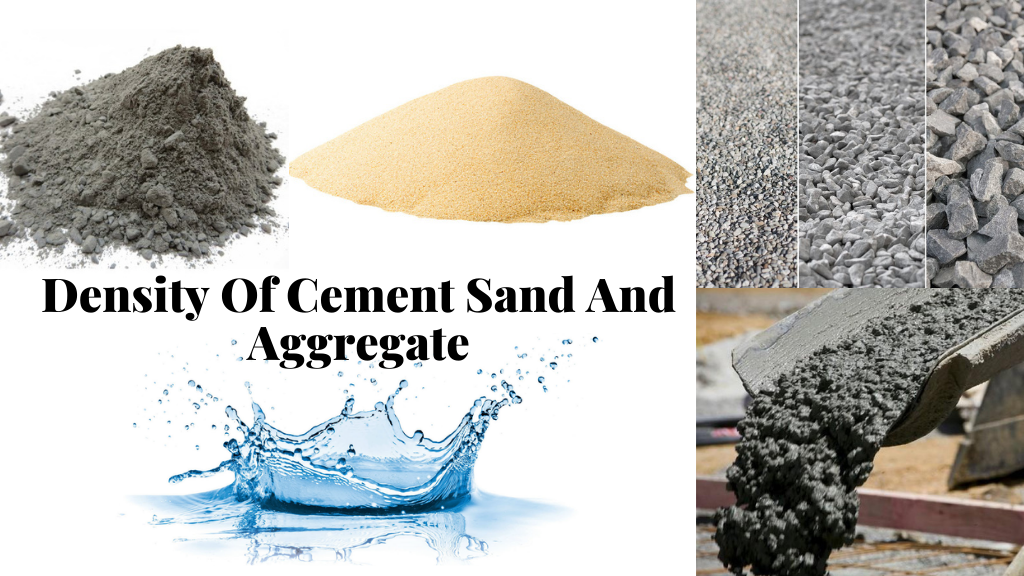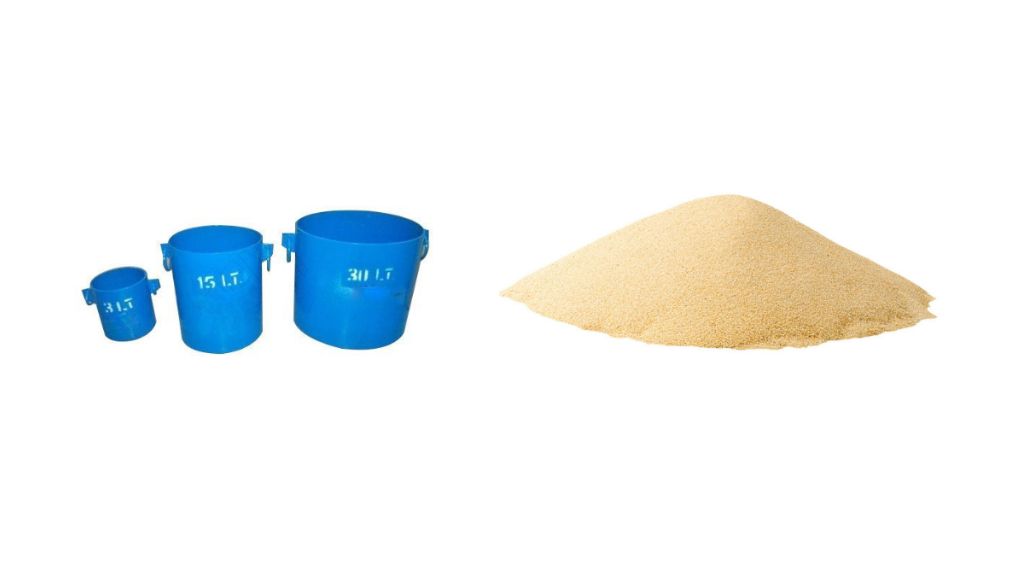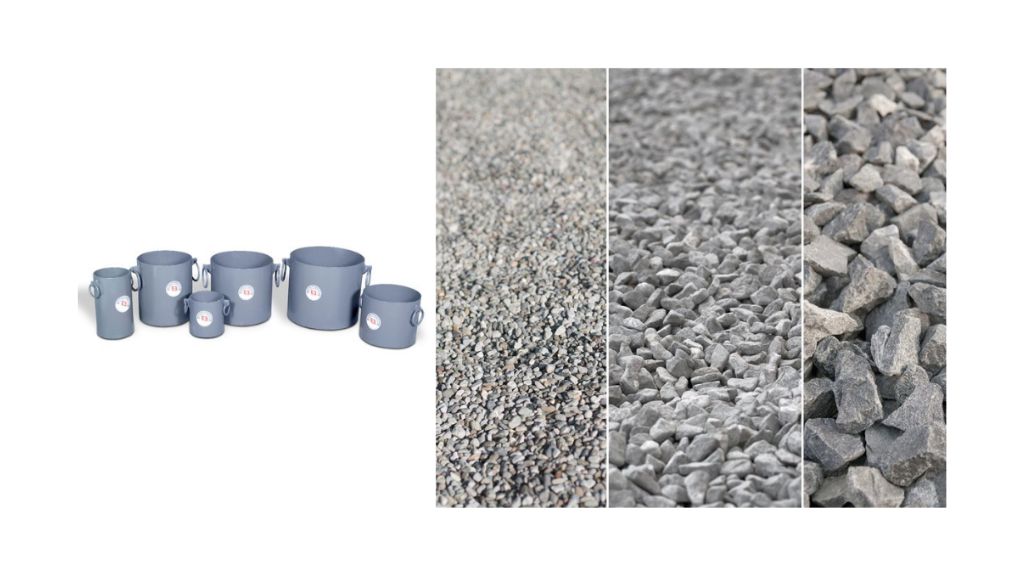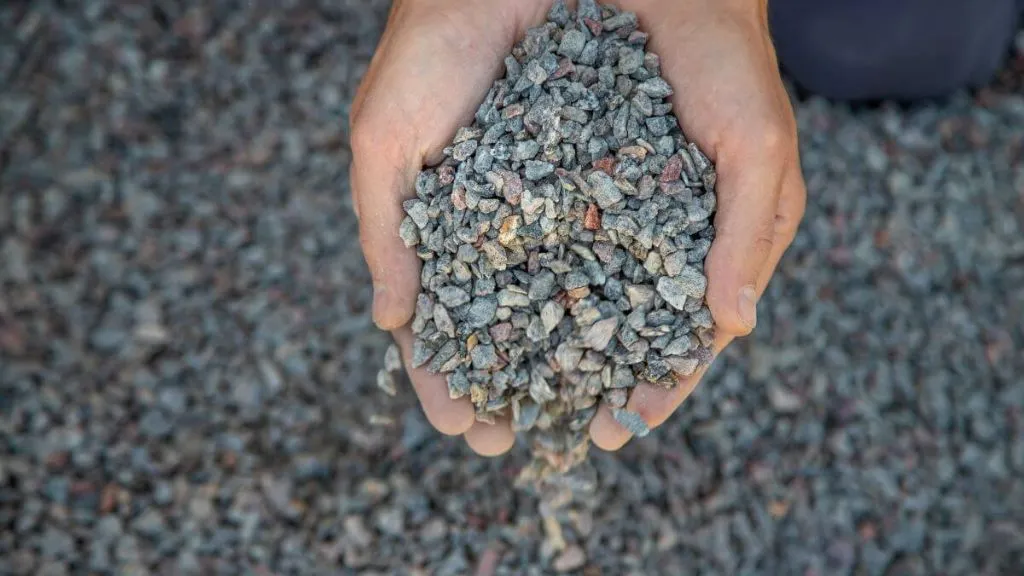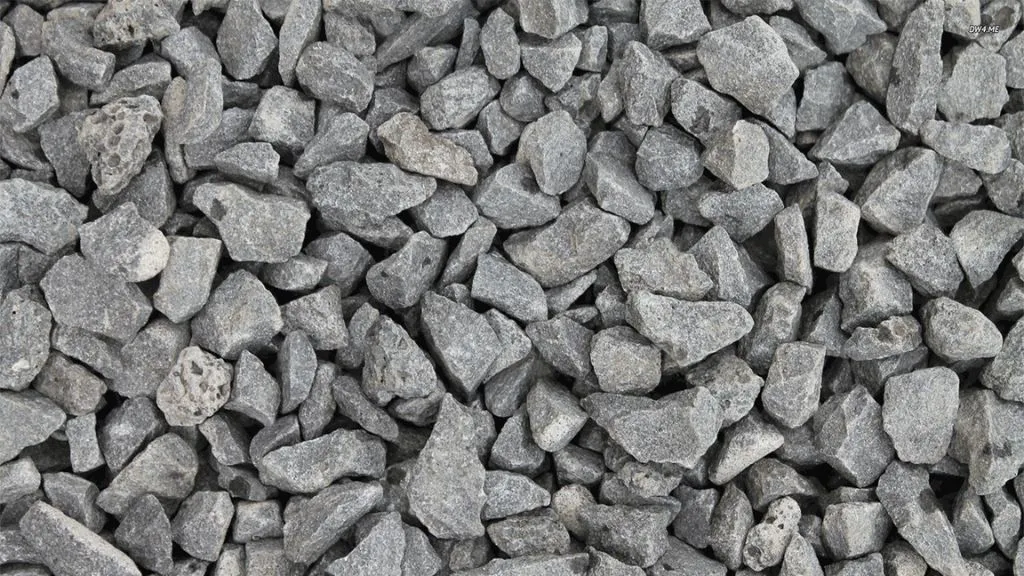In the world of construction, understanding the density of cement, sand, and aggregate is a critical factor that directly affects the durability, stability, and overall quality of any structure. Whether it’s for a towering skyscraper or a cozy residential home, getting the right material density ensures that the building meets safety and longevity standards. This knowledge is indispensable for property developers, real estate investors, construction engineers, and even homeowners who wish to make informed decisions about the materials used in their projects.
What is Density in Construction?
In scientific terms, density refers to the mass of a substance per unit volume, typically measured in kilograms per cubic meter (kg/m³) in the construction industry. For materials like cement, sand, and aggregate, density plays a crucial role in determining their load-bearing capacity, compactness, and interaction with other materials in a concrete mix.
For example, the density of cement (around 1440 kg/m³) ensures strong bonding in the mix, while the density of sand (typically 1600-1800 kg/m³) contributes to the mix’s workability. The density of aggregate (coarse: 1450-1550 kg/m³) influences the concrete’s overall stability and durability. Together, these densities define the density of concrete, typically 2400 kg/m³, ensuring a balance between strength and flexibility. Understanding these densities is key to creating stable, efficient structures, from traditional homes to modern high-rises.
Cement: What it is, it’s density and importance
Cement is a binding material commonly used to create concrete and mortar, making it a fundamental component of modern construction. Cement’s role is to bind other construction materials like sand and aggregate together, ensuring that structures remain cohesive and robust over time.
What is the typical Density of Cement in kg/m³?
The density of cement in kg/m³ generally ranges from 1400 to 1500 kg/m³, with Ordinary Portland Cement (OPC) typically having a density of 1440 kg/m³. Portland Pozzolana Cement (PPC), which contains pozzolanic materials like fly ash, can have a slightly lower density, averaging around 1280 kg/m³.
This difference in the density of cement is significant because it impacts the amount of material required for different construction tasks. Understanding these density values helps construction engineers and contractors mix cement properly for the required strength and workability. Additionally, the bulk density of cement can influence storage, transport, and handling on-site, as denser materials require careful handling to avoid wastage.
Why Cement Density in Construction is Important?
A higher density of cement ensures that the material forms stronger bonds when mixed with other elements like sand and aggregate. This is especially important for constructing load-bearing elements such as columns, beams, and foundations, which must support heavy loads without cracking or collapsing. A higher cement density leads to a more compact and durable mixture, improving the overall structural integrity of buildings, especially in high-rise construction or structures exposed to heavy stress, like bridges and towers.
Understanding the density of cement is critical for determining the correct mix ratios in concrete production. The mix ratio refers to the proportion of cement, sand, aggregate, and water used to form concrete. If the cement density is accurately known (typically around 1440 kg/m³), the water-cement ratio can be finely tuned. This ensures that the concrete mixture achieves the required strength and durability for the intended construction project. For example, a proper mix ratio can prevent issues like cracking, shrinking, or excessive water absorption, making the structure more robust over time.
Knowledge of the density of cement aids in material estimation, which is crucial for efficient project management. For large-scale construction projects, accurate estimation means ordering the right quantities of cement, sand, and aggregate, thereby avoiding overuse or underuse of materials. This results in significant cost savings, reduced material wastage, and improved productivity on-site. Proper material estimates also contribute to sustainable construction practices, as they ensure that resources are not wasted, which can lead to additional costs and delays.
Sand: It’s Density and Impact in Construction
Different Types of Sand in India
In India, several types of sand are used for construction, each having different densities and applications:
Sourced from riverbeds, river sand is naturally occurring and has a smooth, fine texture, making it ideal for plastering and finishing work. However, excessive mining of river sand has led to environmental degradation, including the destruction of river ecosystems. As a result, governments in countries like India have imposed strict regulations and bans on the unregulated extraction of river sand to curb the negative environmental impact. This has driven the demand for alternatives like M-Sand.
- Manufactured Sand (M-Sand)
M-Sand is produced by crushing hard granite rocks into smaller particles, and it is a sustainable alternative to river sand. This type of sand is favoured for construction because it is more readily available, and its properties can be controlled to meet specific building needs. Due to the scarcity of river sand and concerns about illegal mining, many governments actively promote the use of M-sand. In India, for example, certain state governments have even offered incentives and subsidies for M-Sand manufacturing plants.
Extracted from open pits or quarries, pit sand is generally coarser and more angular than river sand, making it suitable for concrete and load-bearing structures. Due to its angular grains, it provides better bonding in cement mixes. While pit sand is more readily available, its usage often requires careful regulation to avoid over-excavation, which can lead to land degradation.
What is the typical Density of Sand in kg/m³?
The density of sand in kg/m³ usually ranges from 1600 to 1800 kg/m³ for dry sand. However, the density can vary significantly depending on factors like moisture content, compaction, and purity. For example:
- Dry, compacted sand typically has a higher density.
- Wet or saturated sand can have a considerably higher density due to water retention.
How Sand Density Impact in Construction
- Strength and Stability: The density of sand affects the concrete’s strength, especially in its load-bearing capacity and structural stability.
- Texture: Sand’s density also influences the texture and workability of the concrete mix, affecting how easily it can be laid or spread in construction projects.
- 1 Unit of Sand Equals How Many kg: A unit of sand typically weighs about 1000 kg. This standard measurement is important when calculating material requirements for large projects.
Aggregate: It’s Density, Types, and Importance
What is Aggregate?
Aggregates are granular materials like sand, gravel, or crushed stone that serve as key components in concrete and mortar mixes. They are mixed with cement and water to create the final concrete mix, which forms the foundation of most construction projects. Aggregates provide compressive strength, durability, and concrete volume, significantly impacting the structural integrity of buildings, roads, bridges, and other civil structures.
Why Aggregates Important in Construction
Aggregates make up 60-80% of a typical concrete mix, meaning that they not only bulk up the material but also contribute to its strength, workability, and durability. They form the skeleton of the concrete mix, enhancing the capacity to withstand heavy loads. Aggregates also help reduce cracking, shrinkage, and water absorption. In summary, they play a critical role in defining the long-term performance and quality of concrete.
Understanding the density of aggregates helps determine the proper mix ratios, ensures the correct strength of the concrete, and influences the overall material estimates needed for a project. For instance, in Reinforced Cement Concrete (RCC), aggregates’ density affects the load-bearing capacity and durability of the structure. The density of RCC in kg/m³ typically ranges from 2400 kg/m³, ensuring that structures can withstand heavy loads and environmental stresses.
Different Types of Aggregates in Construction
Below listed are the 2 types of aggregates and the examples:
- Fine Aggregate
Fine aggregate consists of smaller particles, generally less than 4.75 mm in diameter, such as natural sand or crushed stone dust. They fill the gaps between the coarse aggregates and provide a smooth surface to the finished structure. Commonly used in plastering, masonry, and finishing works, fine aggregates enhance the workability of the concrete and help in reducing voids between the coarse aggregates.
- The density of Fine Aggregate: Ranges from 1500 to 1750 kg/m³.
- Examples: Sand (natural or manufactured), crushed stone dust.
Key Points:
- Fine aggregates are essential for surface smoothness and workability.
- They are particularly important in plastering and masonry work, as well as for providing finer finishes in modern construction.
- They reduce voids in the concrete, thus enhancing its overall strength.
- Coarse Aggregate
Coarse aggregates are larger particles, typically above 4.75 mm in size, such as gravel or crushed stone. They form the bulk of the concrete and contribute to its compressive strength and load-bearing capabilities. Coarse aggregates are essential for creating strong, durable structures, especially in load-bearing applications like foundations, beams, and columns.
- Density of Coarse Aggregate: Typically ranges from 1450 to 1550 kg/m³.
- Examples: Crushed stone, gravel, pebbles.
Key Points:
- Coarse aggregates provide compressive strength and bulk to the concrete mix.
- They are crucial in supporting the structural load of buildings and infrastructure projects.
- The size and shape of coarse aggregates affect the concrete’s workability and strength. Rounded aggregates are easier to work with, while angular aggregates tend to improve the bonding within the concrete mix.
Factors Affecting the Density of Cement, Sand, and Aggregate
Several factors can influence the actual density of these materials during construction:
- Moisture Content: TMoisture content significantly impacts the density of materials like sand and aggregate. Wet sand is denser than dry sand due to added water weight. For instance, dry sand has a density of about 1600 to 1800 kg/m³, but when wet, it becomes heavier, affecting its workability. In concrete, excess moisture can weaken the mix, while controlled moisture ensures the right balance for strength and stability. This is crucial for construction, as improper moisture levels can lead to weaker structures over time, impacting the durability of foundations and buildings.
- Compaction: Compaction refers to compressing materials like sand or aggregate to increase their density by removing air pockets. Proper compaction ensures stronger and more durable structures by preventing voids that can weaken concrete. For example, road construction heavily relies on optimal compaction to avoid potholes or cracks in the surface. Tools like vibratory rollers help achieve the desired level of compaction. Without it, poorly compacted materials can lead to uneven surfaces, reduced strength, and a shorter lifespan of structures.
- Material Composition: The composition of materials like sand and aggregate affects their density. Pure, high-quality materials have a higher density, contributing to stronger concrete mixes. For example, clean river sand has a consistent density, while sand mixed with impurities such as clay reduces overall strength. Similarly, aggregate with air pockets or mixed with unwanted substances weakens the concrete. Using pure materials ensures the strength and longevity of construction projects, preventing structural issues like cracks or premature wear in buildings, roads, and other infrastructure.
Why is Understanding Density Important in Construction?
- Impact on Structural Integrity
The density of materials directly impacts the strength and stability of the final structure. For example, if the density of cement or sand is too low, the concrete may not achieve its required compressive strength, potentially compromising the building’s load-bearing capacity.
- Economical Construction
Accurate density measurements allow for precise material estimates, reducing unnecessary costs and waste. In large-scale projects, even small discrepancies in material usage can result in significant cost differences.
- Real Estate Perspective
From a real estate standpoint, quality construction materials ensure the longevity and safety of buildings. Investors and homebuyers can make better decisions by understanding how the density of materials affects construction quality.
Conclusion
In construction, the density of cement, sand, and aggregate is more than just a theoretical number. It is an essential factor that influences the strength, stability, and overall quality of structures. By understanding these densities, property developers, engineers, and even homeowners can ensure that their buildings are safe, durable, and cost-effective.
Density of Cement, Sand, and Aggregate FAQs:
1. What is the density of cement?
The density of cement typically ranges between 1400 to 1500 kg/m³, depending on the type.
2. How to calculate cement grout density?
Cement grout density can be calculated by dividing the total mass by the volume of the grout, typically resulting in values between 1800 and 2000 kg/m³, depending on the water content.
3. Why is the density of cement, sand, and aggregate important in construction?
Density affects the strength, workability, and durability of the construction materials, which in turn impact the stability and cost-efficiency of the project.
4. What is the density of aggregate in kg/m³?
Fine aggregates have a density of around 1500 to 1750 kg/m³, while coarse aggregates range from 1450 to 1550 kg/m³.
5. What is the difference between fine and coarse aggregate?
Fine aggregate consists of smaller particles like sand, while coarse aggregate consists of larger particles like gravel or crushed stone.
6. How to calculate cement, sand, and aggregate ratios for concrete?
The ratio can be calculated based on the desired concrete strength, with typical mix ratios being 1:2:4 (cement: sand). Knowing the density of each material helps in determining the exact volume required.

